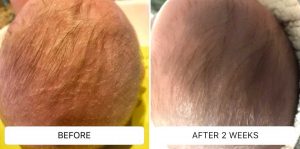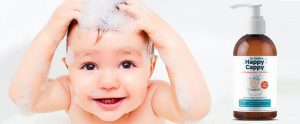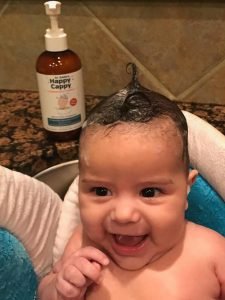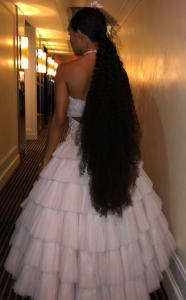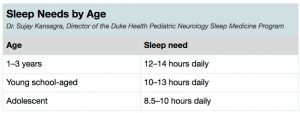America has always been known for its great doctors and entrepreneurs. So what happens when you combine the two together?! You get Dr. Eduard Valenzuela aka “Dr. Eddie”! Dr.Eddie is a famed American children’s pediatrician who just became an entrepreneur with his first product, Dr. Eddie’s Happy Cappy Shampoo, which he developed as a pediatric solution for children’s dandruff and seborrheic dermatitis.
Dr. Eddie studied his craft in Los Angeles before moving to practice in Houston. It’s A Glam Thing caught up with the Dr. to learn more about his journey, product and fashion sense…
NICK NORTHSTAR: How would you describe your own personal fashion style – both while at home and while working?
DR. EDDIE: Where a doctor does their training not only influences how they practice medicine, it also influences ones dress at work. I trained to be a pediatrician locally at the Children’s Hospital of Los Angeles. Many of my mentors there did not wear white coats (kids get intimidated) so I don’t wear one at my office now. At work, my style is relaxed yet professional. I wear elegant shoes( I prefer Allen Edmonds), wacky socks, dress slacks and a logo’d polo style shirt. On Fridays In the spring and summer I wear a Hawaiian shirt or a Guyabera. This tends to put people at ease. When not on the job, as I have aged a bit I have begun to embrace comfort. I skew towards golf like attire—breathable shorts and a golf shirt. If I go out with my wife I like to jazz it up with perhaps a polk-a-dot button up shirt that I got in Paris and well fitting jeans and those Allen Edmonds come right back out again.
NN: The word “Glamorous” can mean many different things… what is its definition to you?
DE: Recently the concept of “glamping” has emerged… I was a boy scout and did a lot of camping throughout my youth. The great outdoors is wonderful, fresh air, birds chirping, but then you get the poorly lit tent, the hard floor, the stiff back in the morning. But then someone decided I am going to take this experience, and make it amazing. We are gonna make it glamorous! We will put real beds in there, a coffee table, a lovely lighting situation to cast a beautiful glow on your loved ones face, a rug, etc. Glamorous takes what is already beautiful and makes it extraordinary. It is attention to detail that makes someone look twice and say wow.
NN: Your product Happy Cappy Shampoo is all about helping newborns and young kids with their flaking, redness, scaling, and irritation on their scalp. Pretty much, your product is helping kids to be glamorous in a healthy way right?!
DE: That is right! It ain’t easy making a baby, and when the newest addition arrives to your family you want the absolute best for them. We are not accustomed to looking at scale, flakes and redness on a persons face and head. And people love smelling their baby, and seborrheic dermatitis, commonly called cradle cap, can smell a little funky as well. Happy Cappy makes these undesirable symptoms go away. Thirty percent of kids continue to have scale from cradle cap up to age 5! Then as kids approach puberty, which can be very young these days, dandruff begins.
NN: Was it hard to come up with a product such as this?
DE: The majority of pediatricians recommend an adult dandruff shampoo to make this condition go away. Parents are not keen to apply an adult product on their baby. I learned this first hand, and I realized that I could make this issue go away. It took me 4 years from coming up with the concept to bringing it to fruition now Available on Amazon. It was a long road and presently we are educating families and doctors that there is a solution made specifically for children of all ages. Not only does Happy Cappy add to a persons glamour, I would like to say that everything about Happy Cappy is glamorous. From the exterior and it’s elegant modern bottle and artwork to the most important part —the actual lathering shampoo which is fragrance free, dye free, alcohol free, paraben free, and sulfate free in a BPA free bottle. Happy Cappy is made locally in Chatsworth.
NN: What is the #1 thing you feel sets it a part from others on the market?
DE: Nothing like it exists. Happy Cappy is a rich lathering, clinically tested shampoo that helps stop flaking and itching associated with dandruff. Happy Cappy does not contain pungent odors like other anti-dandruff shampoos available. Some “all-natural” shampoos claim to be the best remedy for dandruff, but they lack an FDA approved active ingredient. Happy Cappy is the first OTC (Over The Counter) shampoo made specifically for children of all ages with an FDA approved active ingredient. Pyrithione Zinc has been proven safe and effective for many decades and when used as directed actually helps prevent the recurrence of scalp flaking and itching associated with dandruff.
Besides the active ingredient it also has the natural ingredient Licorice Root Extract which help soothes redness. No company has combined the flake fighting and redness reducing ingredient in the past.
NN: What is your advice to anyone wanting to pursue their dreams and create their own product(s)?
DE: Go for it! I am in the medical field but knew very very little about manufacturing and many business concepts. I have enjoyed learning so much about a new field, and I thank the people that have stood by me and did a lot of hand holding. Find good people to hold your hand, have perseverance, and read widely.
NN: How has starting this shampoo company changed your life?
DE: There are many milestones we look forward to in life. Graduating, getting a first job, marriage, children…I always wanted to be an entrepreneur but didn’t how I would go about it. It has been exciting to be optimistic about something new.
NN: Any other products coming out from you in the future?
DE: Well, yes! Thank you for asking… We are very excited to launch Happy Cappy Daily Shampoo & Body Wash. This is a moisturizing cleanser meant for people with sensitive skin, like for kids with eczema or other dry skin conditions like keratosis pilaris (KP). KP is the extremely common condition that causes little flesh colored bumps on the backs of children and adults arms. Of course this product is also perfect for kids with normal skin. This high end daily cleanser has a luxurious lather and replenishes moisture by also incorporating Licorice Root Extract and we have added Oatmeal Extract, Aloe Vera, and Hyaluronate. The daily shampoo is also of course fragrance free, dye free, alcohol free, paraben free, and sulfate free in a BPA free bottle. Happy Cappy Daily Shampoo and Body Wash is made locally just outside of Los Angeles.
To learn more about Dr. Eddie and his incredible new product, head over to: happycappyshampoo.com


